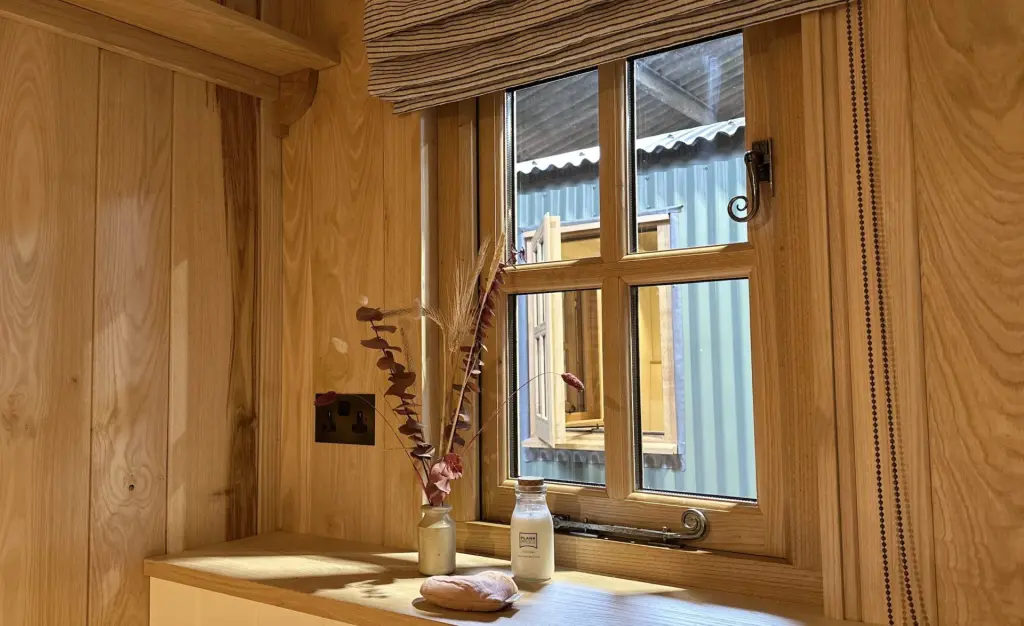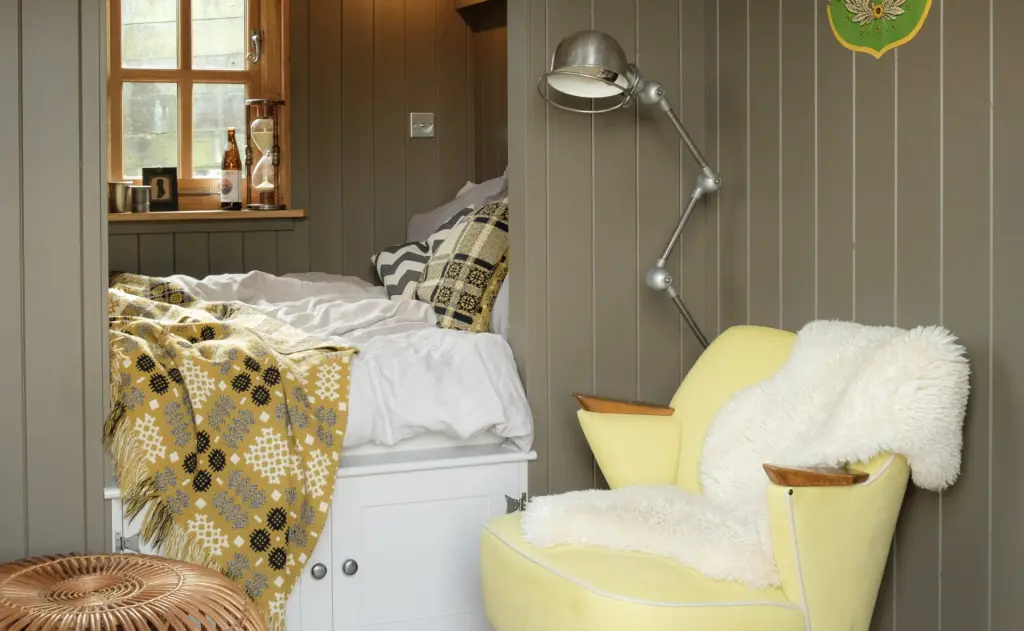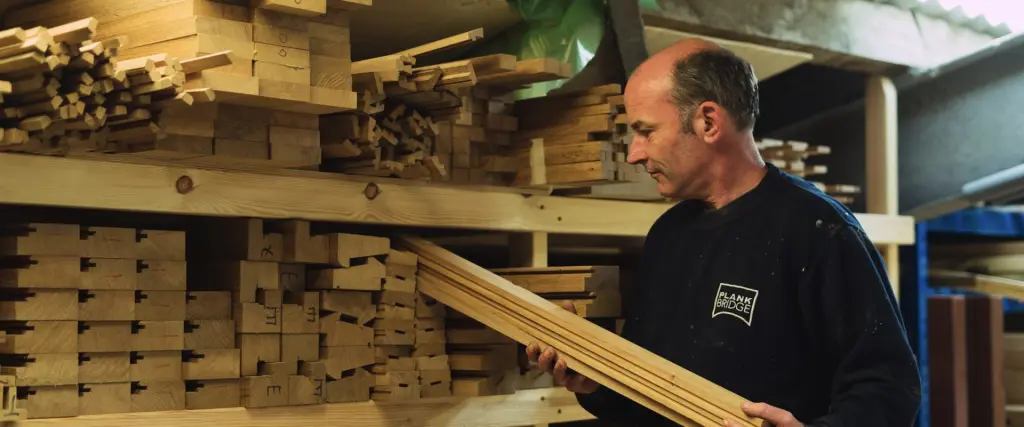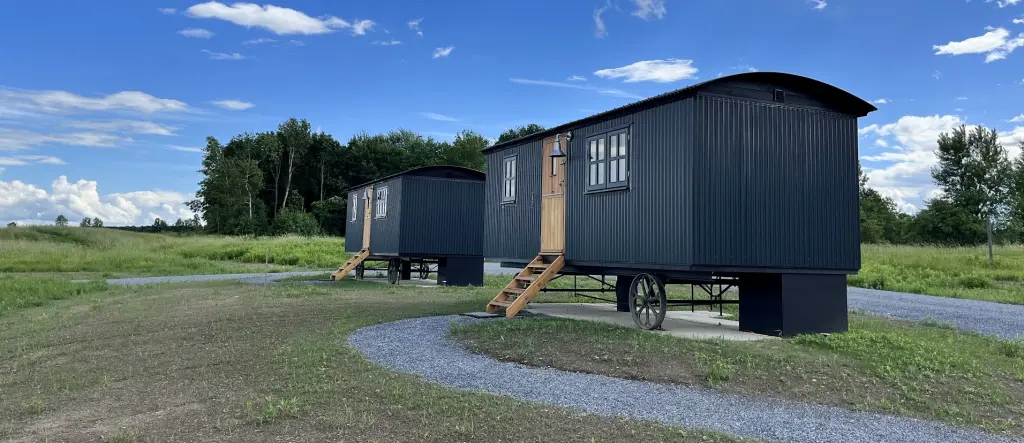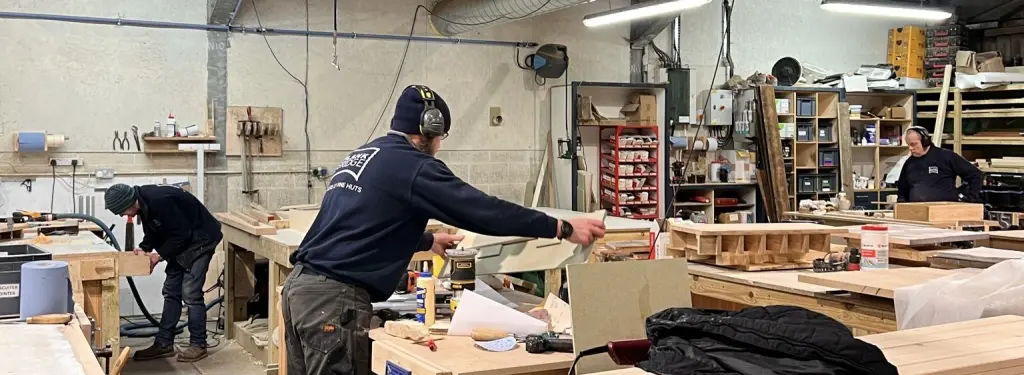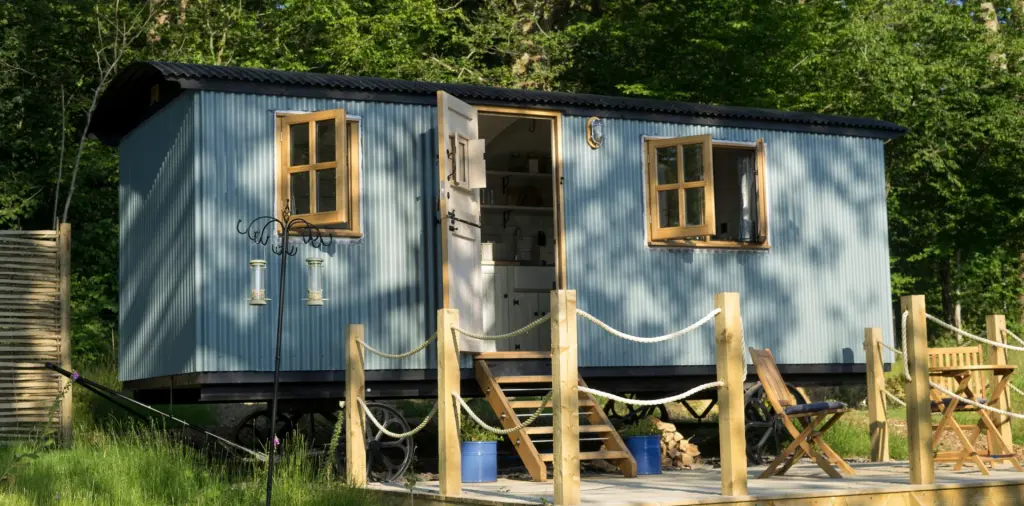There is something so evocative about the old hurricane lamps, with their adjustable wick, heady scent and warm glow. The Victorian shepherd would have hung a lamp on a beam, ready to light and take out into the elements after dark. I suppose the original source of light inside would have been a simple candle, and I remember being given a shepherd’s candle holder once, which had a weighted brass domed base which kept the candle upright even when knocked.
These days a naked flame as the main source of light in a shepherd’s hut would make me nervous. In the early days we used to buy hurricane lamps and take the wick and workings out of them and replace it with a bulb holder. We used to wire them in on the shepherd’s hut electric circuit, and control them on a dimmer switch. It made for quite an atmospheric light, but didn’t really cast the light down to where it is needed.
Our standard practice these days is to wire in wall lights where required, particularly over the head end of the bed. Ceiling lights are usually a traditional bulkhead, more familiar as an outside light. There is still a desire to keep an element of the industrial or bucolic heritage of a shepherds hut. However we increasingly see customers specifying pendant lights with more adventurous shades. There isn’t a huge amount of headroom to dangle a pendant light beneath a curved ceiling, remember to allow headroom for the tallest of guests.
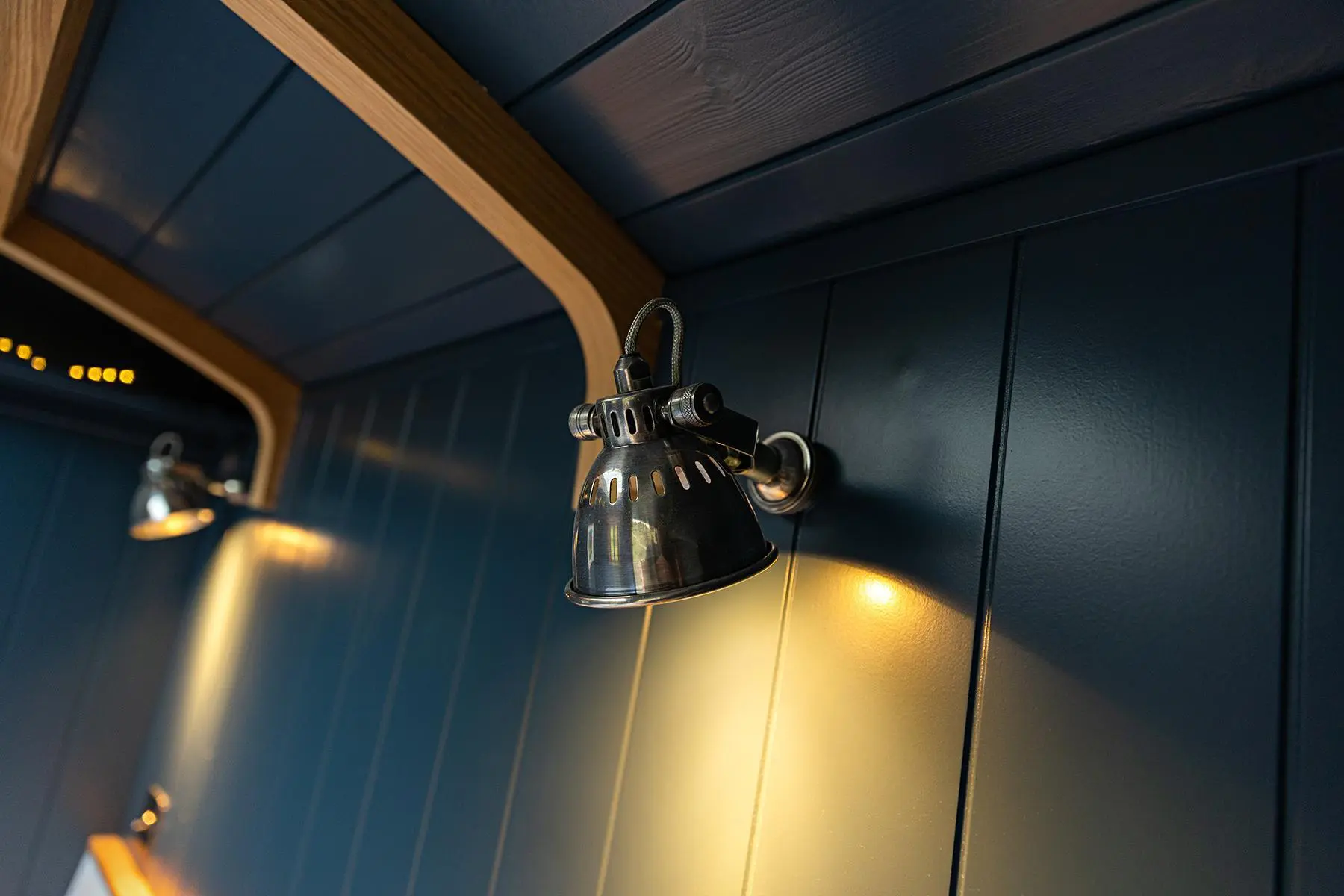
For a home office setting, it makes sense to make sure there are plenty of sockets. If there is a desk position, as in our Snug design, there is scope to plug in a desk lamp. A shepherd’s hut is a wonderful tangible opportunity to dress the interior exactly how you would like it to be. There are specialist shops, such a Felix lighting in Bath, that re-purpose old ships lights, and industrial shades. It doesn’t take much to accessorise your hut and achieve a stylish magazine grade interior.
For my shepherd’s hut at home I’m looking out for a suitable standard lamp to go in the corner. No rush, one day just the right one will leap out on one of our forays around the antiques emporiums. I recently invested in an Angle poise 1227 black and brass desk lamp, a design classic which oozes quality.
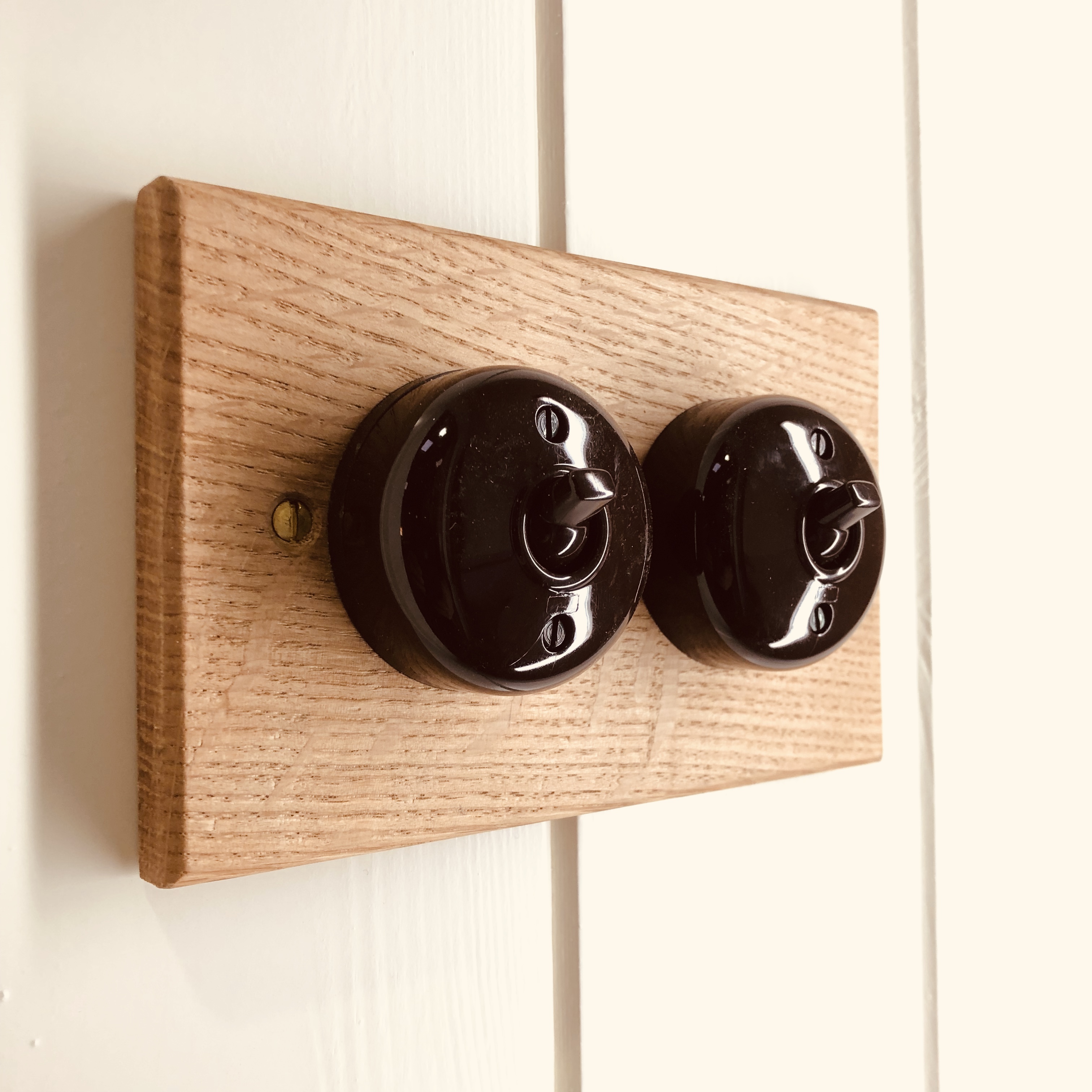
Off-grid shepherd’s huts will require a different source of lighting. Its usual for us to fit a small solar kit which charges a leisure battery. This powers low energy bulbs which don’t draw a huge amount of power. The small tube LED’s, the diameter of a pencil and about 12” long cast a remarkably bright light. LED’s are usually available in warm white or cool, and I would always prefer the warm white. Cool light contains more blue which is brighter for working, but has quite a cold feel.
An outside light, again usually a bulkhead light, is a practical addition and can be linked to a PIR sensor so it turns on when the shepherd’s hut is approached. You may not want the PIR in places where regular traffic or a passing badger sets it off. We often fit other exterior lights to customer specs, such as ship lights, more fancy exterior lanterns and stable lights. It’s worth considering light pollution, as there seems to be an increasing scourge of outside lights ruining the night skies. Planners will often specify lighting which does not add to that problem, and outdoor down lighters are available.
You may want to think about running extra cables in your services trench; it may be useful to be able to switch the external light on from in the house, or an external switch mounted outside the back door. It’s straightforward to do and you would be pleased to be able to light the way on a dark winter’s evening when you are heading out to your garden office shepherd’s hut.
There is an interesting science to lighting, and the colour temperature is measured in kelvins, the lower the number the warmer the light. The lovely warm glow from a candle is around 2000 degrees kelvin, a harsher fluorescent light might be 4500 degrees kelvin and mid-day sunshine 5500 or so. It’s worth looking into the subject if you are interested, as bulbs of different kelvins are readily available and will make a big difference when illuminating the shepherd’s hut’s interior paint colours.

